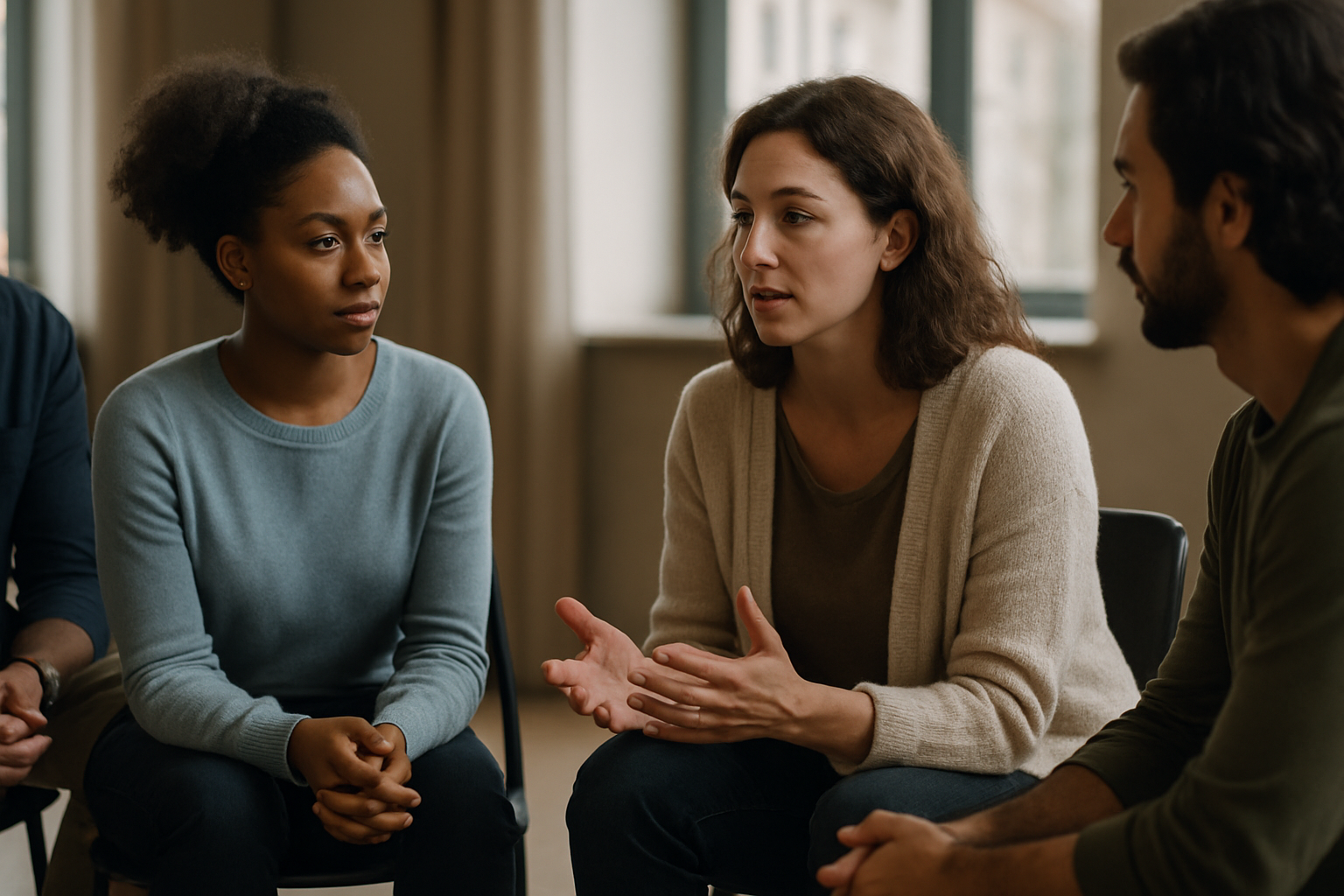A Practical Guide to Decoding Subtle Body Language Cues for Better Communication
Ever wondered what someone’s body language might really be saying? This practical guide explores subtle physical cues—like frequent chin touching or rapid blinking—and how they can reflect confidence, uncertainty, or emotional stress. Learn how decoding gestures can help you navigate conversations, build stronger connections, and better understand those around you.

What are the most common subtle body language cues?
Body language cues are nonverbal signals that people unconsciously display through their posture, facial expressions, and gestures. Some of the most common subtle cues include:
-
Micro-expressions: Brief facial movements that reveal true emotions
-
Eye contact patterns: Duration and frequency of eye contact
-
Posture changes: Shifts in body position or alignment
-
Hand gestures: Unconscious movements of hands and fingers
-
Feet positioning: Direction and movement of feet during conversations
Understanding these cues can provide valuable insights into a person’s emotional state and level of engagement in a conversation.
How can you interpret crossed arms and legs effectively?
Crossed arms and legs are often misinterpreted as signs of defensiveness or discomfort. However, context is crucial when decoding these body language cues. Consider the following:
-
Environment: Is it cold? Crossed arms might simply indicate warmth-seeking behavior.
-
Cultural norms: Some cultures consider crossed legs polite in formal settings.
-
Comfort: Crossed arms or legs can be a relaxed, natural position for some individuals.
-
Accompanying facial expressions: Look for other cues that support or contradict your initial interpretation.
To accurately interpret crossed arms and legs, observe the overall context and look for clusters of cues rather than relying on a single signal.
What do micro-expressions reveal about hidden emotions?
Micro-expressions are involuntary facial movements that occur within a fraction of a second, revealing true emotions before a person can consciously control their expression. Key micro-expressions to watch for include:
-
Surprise: Raised eyebrows, widened eyes, and slightly open mouth
-
Fear: Raised eyebrows drawn together, widened eyes, and lips stretched horizontally
-
Disgust: Wrinkled nose, raised upper lip, and slightly narrowed eyes
-
Anger: Lowered eyebrows, intense stare, and tightened lips
-
Happiness: Crow’s feet wrinkles around the eyes and raised cheeks
By learning to recognize these fleeting expressions, you can gain valuable insights into a person’s genuine emotional state, even when they’re trying to conceal it.
How can you use nonverbal communication tips to build rapport?
Developing rapport through nonverbal communication involves creating a sense of connection and mutual understanding. Here are some effective tips:
-
Mirror body language: Subtly match the other person’s posture and gestures
-
Maintain appropriate eye contact: Find a balance between engaged and comfortable
-
Use open body language: Uncross your arms and legs, and face the person directly
-
Lean in slightly: Show interest without invading personal space
-
Nod and use facial expressions: Demonstrate active listening and engagement
By consciously implementing these nonverbal communication tips, you can create a more positive and harmonious interaction, fostering stronger connections with others.
What are some lesser-known body language secrets?
While many people are familiar with basic body language cues, there are some lesser-known signals that can provide valuable insights:
-
Pupil dilation: Enlarged pupils can indicate interest or attraction
-
Feet direction: People tend to point their feet towards the person or thing they’re most interested in
-
Pacifying behaviors: Self-soothing gestures like rubbing the neck or playing with jewelry may indicate discomfort or stress
-
Shoulder shrugs: A full shoulder shrug indicates certainty, while a half-shrug may suggest uncertainty or deception
-
Lip compression: Tightened lips often signal stress, anxiety, or disapproval
Understanding these subtle cues can help you gain a more comprehensive understanding of someone’s emotional state and intentions.
How can online courses enhance your body language reading skills?
Online courses offer a convenient and structured way to improve your ability to read body language. Many platforms provide comprehensive programs taught by experts in nonverbal communication. Here’s a comparison of popular online body language courses:
| Course Name | Provider | Key Features | Cost Estimation |
|---|---|---|---|
| Body Language for Entrepreneurs | Udemy | 6.5 hours of video content, lifetime access | $89.99 |
| Mastering Body Language | Coursera | 4-week course, peer-reviewed assignments | $49/month subscription |
| Reading Body Language | LinkedIn Learning | 1-hour course, exercise files included | $29.99 or free with premium |
| Body Language for Leaders | edX | 4-week course, verified certificate available | Free to audit, $199 for certificate |
| Nonverbal Communication | FutureLearn | 3-week course, expert interviews | Free to join, $59 for unlimited access |
Prices, rates, or cost estimates mentioned in this article are based on the latest available information but may change over time. Independent research is advised before making financial decisions.
Learning to decode subtle body language cues is a valuable skill that can significantly enhance your communication abilities. By understanding and interpreting nonverbal signals, you can gain deeper insights into others’ thoughts and emotions, build stronger relationships, and navigate social situations more effectively. Whether through self-study or structured online courses, investing time in developing your body language reading skills can lead to more meaningful and successful interactions in both personal and professional settings.




